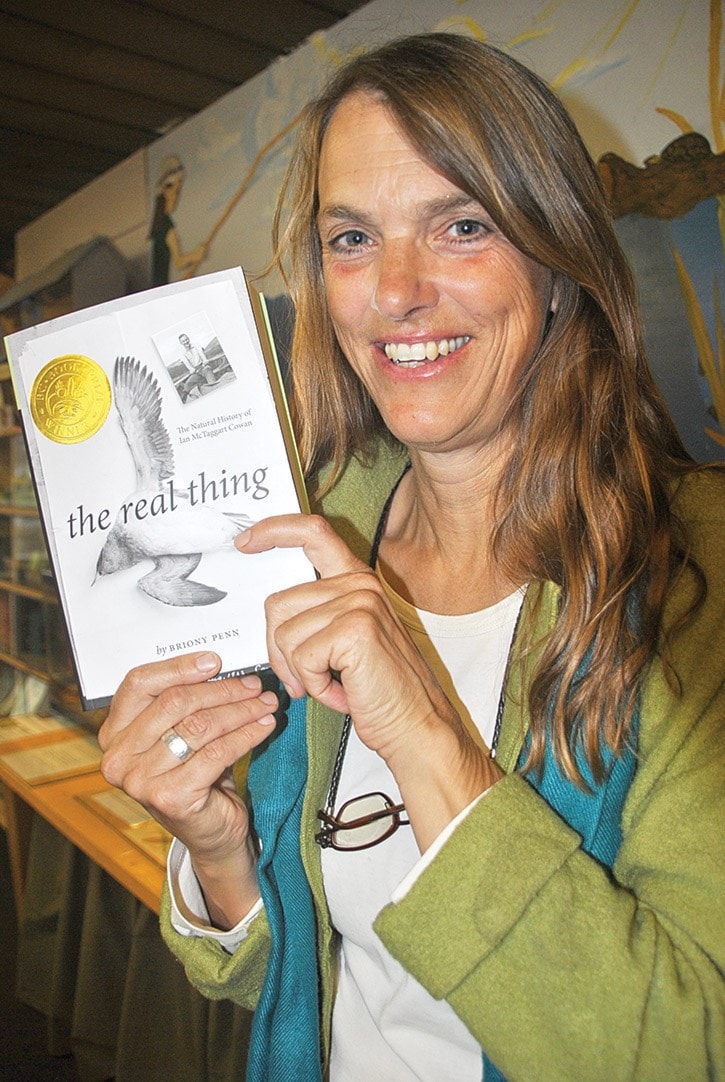A taste for venison started Ian McTaggart Cowan on his lifelong quest to record the habits and habitat needs of wildlife in B.C.
“He attributes the fact that he lived to be 100 to the fact that he lived on venison,” says Briony Penn, who has penned the official biography of Cowan, who is considered to be the father of Canadian ecology.
Penn tells Cowan’s remarkable story in her new book The Real Thing: The Natural History of Ian McTaggart Cowan.
The book is 558 pages thick but a good read, says naturalist Fred McMechan.
“It’s not as dry a biography as you had to read at university,” McMechan says.
Penn says Cowan wasn’t actually recognized as the pioneer of scientific wildlife research until very recently.
She says Cowan established the very first nature television educational series in the 1950s and 60s, Fur and Feathers, Web of Life in 1955, and The Living Sea that made science exciting and found audiences around the world.
Cowan also set up the very first wildlife management school at the University of British Columbia toward the end of the Second World War.
Penn says veterans returning from the war were permitted to go straight into university and a lot of Cowan’s recruits were prairie boys who had been hunters before the war and found that working with Cowan out in nature eased the shell shock of war, or what we know today as post traumatic stress syndrome.
Cowan trained a whole team of people who became conservation officers, park wardens, and Canadian wildlife service scientists, she says.
The veterans who trained with Cowan also became involved in starting chapters of Ducks Unlimited and other non-profit fish and game organizations.
“At one time every single wildlife department across Canada was staffed by his students,” Penn says.
“So what he did was bring science to wildlife management.”
She said Cowan was also a very avid subsistence hunter, and supporter of indigenous subsistence lifestyles.
As a result he worked on many projects such as recording wildlife activity in the Mackenzie Delta prior to the development of the Mackenzie pipeline.
He worked with Eric Collier at Meldrum Creek to set up his beaver restoration project.
Cowan and his team also did all of the research and advising on California and Rocky Mountain big horn sheep whose populations were in serious decline in the 1930s.
“We wouldn’t have any big horns here if these guys hadn’t been paying attention at a really critical time,” Penn says.
“There’s even a big horn conservation area down in the Okanagan named after him.”
She says Cowan’s favourite animal of all to eat was black tail deer (mule deer), starting from the time he was a teenager hunting in the hills around Vancouver.
“He was a real advocate for good sportsmanship, scientific wildlife management, and really understanding animal populations and how they relate to their environment.”
She says Cowan also very much appreciated local knowledge.
For example she said he used a lot of the information provided by Fred Shillaker, a fur buyer at Chezacut because Shillaker was such as good naturalist and record keeper.
She notes that all of of Cowan’s journals about wildlife populations are available on the University of Victoria library’s website. Searches can be made on specific animal populations such as big horn sheep and other animals indicating what we once had and what we could have again with careful wildlife management.
“There are still a lot of species at risk and ecosystems at risk,” Penn says.
Today, she says one of the big areas people are worried about is the impact on wildlife with the proposed development of the Site C Dam on the Peace River in northeast B.C.
She says Cowan did animal population surveys in the Peace River region before the area was flooded to create the W.A.C. Bennett dam.
“We should be paying attention to that kind of thing because we are about to do it again and it is going to have an even greater impact,” Penn says.
Cowan started the concept of incremental impact on wildlife, she adds.
“You can’t just keep doing things to wildlife and expect it to survive. Each little thing is like death by a thousand cuts.”
In his later years Cowan, who lived from 1910 to 2010, co-edited The Birds of British Columbia.
The Real Thing is a BC Book Prize Winner of the Roderick Haig-Brown Regional Prize for the book that contributes most to the enjoyment and understanding of B.C.
The Real Thing also won the Mack Laing Heritage Society Literary Prize.
